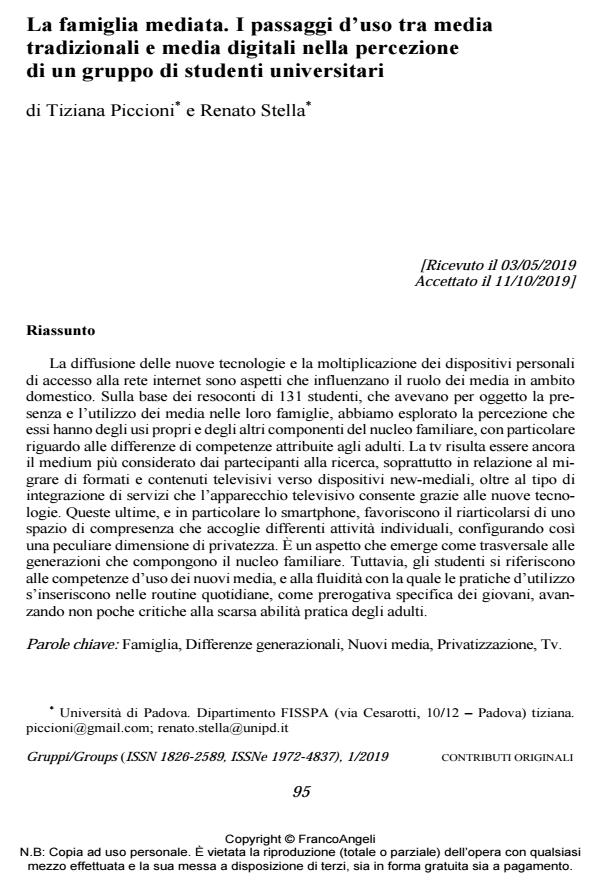The mediated family. Transitions of use from traditional media to digital media in the perception by a group of university students
Journal title GRUPPI
Author/s Tiziana Piccioni , Renato Stella
Publishing Year 2019 Issue 2019/1
Language Italian Pages 16 P. 95-110 File size 209 KB
DOI 10.3280/GRU2019-001008
DOI is like a bar code for intellectual property: to have more infomation
click here
Below, you can see the article first page
If you want to buy this article in PDF format, you can do it, following the instructions to buy download credits

FrancoAngeli is member of Publishers International Linking Association, Inc (PILA), a not-for-profit association which run the CrossRef service enabling links to and from online scholarly content.
The spread of new technologies and the multiplication of internet access per-sonal devices are issues that influence the media role in domestic environment. On the basis of 131 students’ reports, whose object is the presence and media use in their families, we explored the perception they have about their own uses and about those of other family members, with particular concern to the differences in competences attributed to adults. Tv is still the medium most considered by re-search participants, especially in relation to the migration of television formats and contents to new-media devices, in addition to the kind of services integration that television allows through new technologies. These, and especially the smartphone, favour the re-articulation of a space of co-presence hosting different individual activities, thus configuring a peculiar private dimension. This is an aspect emerging as transversal to the different generations making up the family nucleus. However, our students refer to skills in using new media, and to the fluidity with which new practices of use are made part of everyday routines, as specific prerogatives of young people. So, they make criticism toward the lacks in adults’ practical skills.
Keywords: Family, Generational differences, New media, Privatization, Tv.
Tiziana Piccioni , Renato Stella, La famiglia mediata. I passaggi d’uso tra media tradizionali e media digitali nella percezione di un gruppo di studenti universitari in "GRUPPI" 1/2019, pp 95-110, DOI: 10.3280/GRU2019-001008